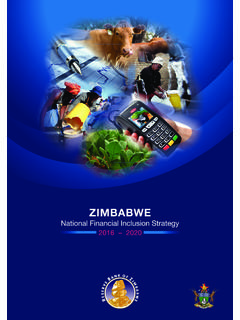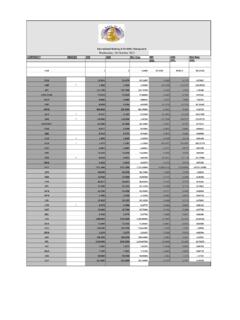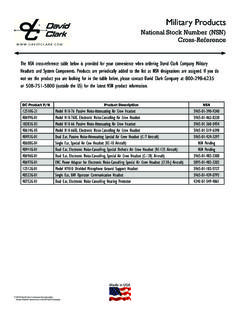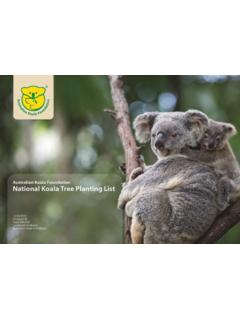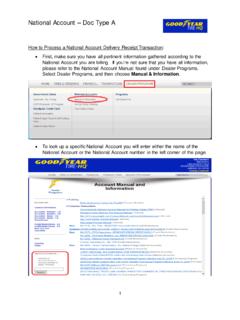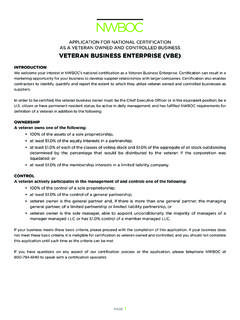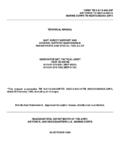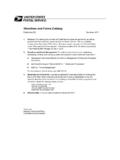Transcription of ZIMBABWE NATIONAL FINANCIAL INCLUSION STRATEGY
1 ZIMBABWE NATIONAL FINANCIAL INCLUSION STRATEGY 2016 2020 2 TABLE OF CONTENTS 1 CHAPTER 1: INTRODUCTION .. 7 2 CHAPTER 2: EXECUTIVE SUMMARY .. 9 3 CHAPTER 3: STATUS OF ACCESS TO FINANCIAL SERVICES IN ZIMBABWE .. 13 4 CHAPTER 4: RATIONALE, DEFINITION, VISION, MISSION AND OBJECTIVES .. 33 5 CHAPTER 5: PILLARS OF THE NFIS & CORE 40 6 CHAPTER 6: TARGETS, PRIORITY AREAS, AND SPECIFIC STRATEGIC MEASURES .. 52 7 CHAPTER 7: MEASUREMENT FRAMEWORK AND FINANCIAL INCLUSION INDICATORS .. 84 8 CHAPTER 8: MONITORING AND EVALUATION FRAMEWORK .. 95 9 CHAPTER 9: STAKEHOLDERS ROLES AND RESPONSIBILITIES .. 102 3 LIST OF TABLES Table 1: Architecture of the banking sector as at 31 December Table 2: Breakdown of Branches and Access Channels as at 31 December Table 3: Architecture of the Insurance Sector as at 30 September Table 4: Architecture of the Pensions & Provident Fund Sector as at 30 June Table 5: Architecture of Licensed Capital Market Players as at 30 September Table 6: ZIMBABWE Stock Exchange Investment Categories 30 September Table 7: Players in the Capital Markets Table 8: Architecture of the NATIONAL Payment Systems as at 30 September Table 9: ZIMBABWE Population: Age Table 10: Key FINANCIAL INCLUSION Indicators as at 2011 and Table 11: Summary of the Proposed FINANCIAL INCLUSION Table 12: Key Accessibility, Usage and Quality Table 13: Monitoring & Evaluation.
2 Example of a Management Summary Table 14: Monitoring & Evaluation: Traffic Light Rating Table 15: Monitoring & Evaluation: Illustrative Status Report Performance Table 16: Monitoring & Evaluation: Evaluation Table 17: Stakeholder Roles and 4 LIST OF FIGURES Figure 1: Players in the FINANCIAL Services Figure 2: Banking Sector Products and Figure 3: Insurance Sector Figure 4: Payment Systems Access Figure 5: Payment Systems Access Channels Per 100,000 Figure 6: Distribution of Adult Population and Education Figure 7: Major barriers to FINANCIAL INCLUSION across the FINANCIAL Figure 8: Exclusion Level and Sector Specific Barriers to Access to FINANCIAL Figure 9: FINANCIAL INCLUSION Pillars and Figure 10: Goals of Consumer Figure 11: Impediments to Development of the Microfinance 5 ABBREVIATIONS AFI Alliance for FINANCIAL INCLUSION AMA Agricultural Marketing Authority AML/CFT Anti-Money Laundering and Counter Financing of Terrorism ATMs Automatic Teller Machines BAZ Bankers Association of ZIMBABWE BOE Bills of exchange BOOT Build, Own, Operate and Transfer BOT Build, Operate and Transfer CCZ Consumer Council of ZIMBABWE CDD Customer Due Diligence CIS Collective Investment Schemes CSD Central Securities Depository DFID Department of Foreign and International Development ECGC Export Credit Guarantee Corporation EFT Electronic funds transfer EFTPOS Electronic Funds Transfer Point of Sale GDP Gross Domestic Product GIZ Gesellschaft f r Internationale Zusammenarbeit (German Society for International Cooperation)
3 HIVOS Humanistisch Instituut voor Ontwikkelingssamenwerking (International Humanist Institute for Cooperation with Developing Countries) ICT Information and Communications Technology IDBZ Infrastructural Development Bank of ZIMBABWE IMF International Monetary Fund IPEC Insurance and Pensions Commission KYC / CDD Know Your Customer / Customer Due Diligence 6 MAC Microfinance Advisory Council MAP Making Access Possible MFIs Microfinance Institutions MNOs Mobile Network Operators MSMECD Ministry of Small & Medium Enterprises and Co-operative Development MSMEs Micro, Small and Medium Enterprises NFIS NATIONAL FINANCIAL INCLUSION STRATEGY NFNV New Faces New Voices NPS NATIONAL Payment Systems PPP Public-Private Partnership POS Point of Sale POSB People's Own Savings Bank POTRAZ Postal and Telecommunications Regulatory Authority of ZIMBABWE RBZ Reserve Bank of ZIMBABWE SACCOS Savings and Credit Cooperative Societies SADC Southern African Development Community SME Small and Medium Enterprises SMEDCO Small and Medium Enterprises Development Corporation SECZ Securities and Exchange Commission of ZIMBABWE SIRESS SADC Integrated Regional Electronic Settlement System ROSCAs Rotating Savings and Credit Associations RTGS Real Time Gross Settlement USAID United States Agency for International Development ZAMFI ZIMBABWE Association of Microfinance Institutions ZIMASSET ZIMBABWE
4 Agenda for Sustainable Socio-Economic Transformation ZIMSTAT ZIMBABWE NATIONAL Statistics Agency ZSE ZIMBABWE Stock Exchange 7 1 CHAPTER 1: INTRODUCTION Global, regional and NATIONAL -level policy makers are increasingly embracing FINANCIAL INCLUSION as an important priority for fostering economic and social development. These policy makers recognise the strength of FINANCIAL INCLUSION as a driver of economic growth. This realisation has culminated in the adoption of policies and measures aimed at growing global FINANCIAL INCLUSION as a means of promoting world economic prosperity. The significance of FINANCIAL INCLUSION in the economic development agenda has also been epitomized by the formation of networks and organisations with specific focus on FINANCIAL INCLUSION matters. Such organisations / networks include the Alliance for FINANCIAL INCLUSION and the Global Partnership for FINANCIAL INCLUSION .
5 This development has resulted in the attempt to define best practice standards to guide the implementation of FINANCIAL INCLUSION initiatives, such as the G20 Principles for Innovative FINANCIAL INCLUSION . One of the most pronounced trends currently observed among the Alliance for FINANCIAL INCLUSION s (AFI) member countries is the increasing focus on the development of NATIONAL FINANCIAL INCLUSION strategies. ZIMBABWE joined the AFI network in 2012. There is growing evidence that NATIONAL FINANCIAL INCLUSION strategies are now seen as essential by many countries, as they provide a clear NATIONAL vision, a widely accepted strategic framework and a robust organizational structure to facilitate the development and implementation of coordinated and sound policy reforms. NATIONAL FINANCIAL INCLUSION strategies provide an important opportunity to introduce an evidence-based, prioritized, better resourced, and more comprehensive approach to expanding access and usage of FINANCIAL services.
6 A NATIONAL STRATEGY with clear goals and targets supports coordination among public and private sector stakeholders and provides an organizing framework for FINANCIAL INCLUSION policies and regulations to be implemented. 8 The development and implementation of the NATIONAL FINANCIAL INCLUSION STRATEGY for ZIMBABWE is aimed at ensuring the existence of an inclusive FINANCIAL sector that broadens access to and use of FINANCIAL services by all with the view of engendering social and economic development. The STRATEGY defines the parameters for ongoing measurement and evaluation of the impact of specific actions and monitoring of progress over the implementation period. 9 2 CHAPTER 2: EXECUTIVE SUMMARY The Government of ZIMBABWE is cognisant of the significant contribution of an inclusive FINANCIAL sector to the socio-economic development of the country.
7 There is consensus among stakeholders driving the FINANCIAL INCLUSION agenda in ZIMBABWE that broadening access to and usage of FINANCIAL services stimulates FINANCIAL savings and investment, as well as increase the level of loanable funds. This will have substantial positive impact on people s lives through reduction of poverty and inequalities, and promotion of economic growth, while mitigating systemic risk and maintaining FINANCIAL stability. ZIMBABWE has, in the past, instituted a number of initiatives to broaden access to FINANCIAL services. Notwithstanding the strides made in the pursuit of an inclusive FINANCIAL sector, gaps still exist in the level of access to, usage and quality of FINANCIAL products and services, as well as the impact on the lives of those consuming the products and services.
8 The gaps are particularly pronounced among special groups such Micro, Small and Medium Enterprises (MSMEs), women, youth, rural population and the small scale agricultural sector. The 2012 FinScope MSME Survey and the 2014 FinScope Consumer Survey revealed that 23% of ZIMBABWE s adult population was financially excluded, only 30% of ZIMBABWE s adult population made use of banking services as at 2014, only 14% of MSME owners were banked and only 1% of adult population made use of capital market services. Further, the World Bank Consumer Protection and FINANCIAL Literacy Diagnostic Report of 2014 revealed low FINANCIAL literacy, despite ZIMBABWE having a high rate of general literacy. To this end, key stakeholders have committed to the development and implementation of a NATIONAL FINANCIAL INCLUSION STRATEGY (NFIS).
9 In the context of ZIMBABWE , FINANCIAL INCLUSION is defined as the effective use of a wide range of quality, affordable & accessible FINANCIAL services, provided in a 10 fair and transparent manner through formal / regulated entities, by all Zimbabweans. This entails access to and usage of a wide spectrum of products and services provided by various players in the FINANCIAL services sector, including banking, insurance, pension, capital markets, microfinance, developmental FINANCIAL institutions and payment systems. The overarching motivation for the NATIONAL FINANCIAL INCLUSION STRATEGY is to enable in-depth analysis of barriers to FINANCIAL INCLUSION and identification and implementation of coordinated strategies during the STRATEGY period of 2016 - 2020. The NFIS seeks to address the broad barriers to FINANCIAL INCLUSION through implementation of key priority measures with the view to reducing the level of FINANCIAL exclusion.
10 The NFIS is imperative for the establishment of a framework for the co-ordination of FINANCIAL INCLUSION initiatives; identification of priority action points; identification of key stakeholders; provides a monitoring & evaluation framework for the attainment of FINANCIAL INCLUSION goals and also provides a basis for ongoing engagement on FINANCIAL INCLUSION matters by key stakeholders. The pursuit of FINANCIAL INCLUSION in ZIMBABWE is consistent with the broader NATIONAL developmental objectives of the ZIMBABWE Agenda for Sustainable Socio-Economic Transformation (ZIMASSET) and supports three (3) key clusters namely Food Security & Nutrition, Social Services & Poverty Eradication, and Value Addition & Beneficiation and the sub-cluster of Monetary and FINANCIAL Reform Measures. The NFIS will evolve around four main pillars, namely FINANCIAL innovation, FINANCIAL capability, FINANCIAL consumer protection and microfinance.
